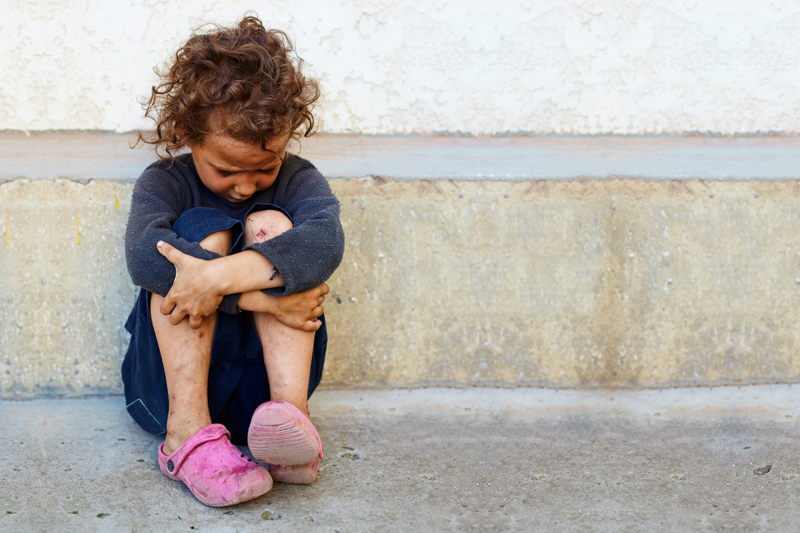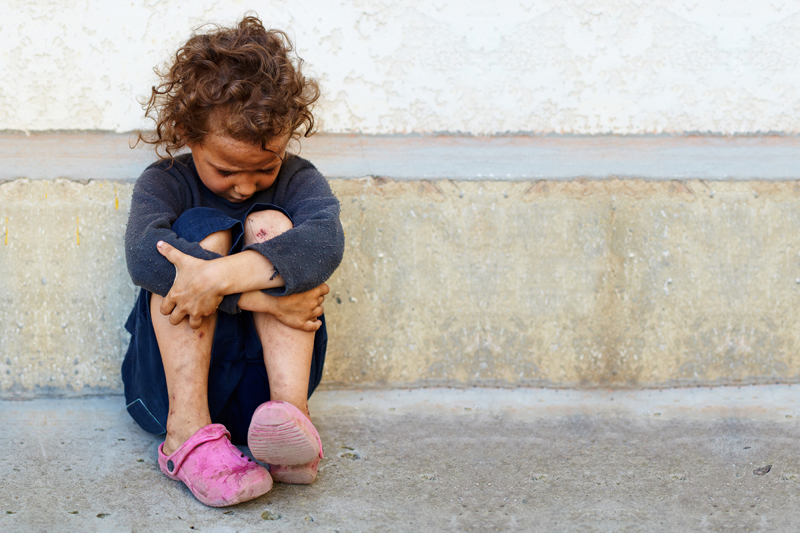Protecting Your Child's Identity

Children are so vulnerable in today’s world. There are so many ways our children’s personal information is distributed that we may not even realize we are putting them at risk. When we consider how many people, places, and resources have access to our children’s information it is ultimately frightening. It is imperative that we consider all avenues when trying to protect our children’s identity.
When we think of protecting our children’s identity, the World Wide Web is usually the first thing that comes to mind. Yet that is only one of multiple resources that can be used to track down a child. Think about the places just in the last 2 weeks you may have given out information to involving one or more of your children.
Some of the places that you may have given someone information regarding your child might include the pediatrician or family internist, dentist, orthodontist, eye doctor, hospital, emergency room, surgeon, school system, teacher, school counselor, therapist, babysitter, childcare center, and if you have travelled recently an airlines or hotel. This list is by no means all inclusive, yet it may trigger your memory of just a few of the places you have shared their personal information about your child.
Protect your child’s social security number with a vengeance. A person’s social security number is the gateway to one’s financial portfolio, past, present and future. A doctor’s offices and other facilities do not need your child’s SSN to accurately keep records on your child. If someone insists on having your child’s SSN ask them how they will guarantee its safety. If it is written down on a form, what happens to the form after the information is entered into a data base. If it is entered into a data base ask if the data base is password protected and who has access to the information. Laptop computers carrying personal information are stolen daily.
Please check your child’s personal social security number every six months at the same time you check your own social security number and financial records. Be sure if you see any activity on their name to act immediately to correct it and report any fraudulent information to the proper authorities. It is better to monitor your child’s SSN regularly rather than finding out when your child is applying for a driver’s license or college that their identity has been stolen.
When you are answering questions about your child consider if the source asking the questions truly needs to know the information, especially online. Make sure that online children do not use their first or last names or first initials and last names. When forwarding e-mails to people cut and paste the information in the body of the e-mail, cutting out the extraneous e-mail addresses in the beginning, middle, and end from previous forwards of the same e-mail. This will prevent companies from spamming your child. Many spammers simply surf the web looking for past messages and online groups messages that list the e-mail senders name and recipients addresses. Explain to children never to open e-mail from someone they do not know, even if the e-mail includes their name.
Teach children to never give personal information online without clarifying what is ok with you. Simply list a child’s email address or child’s first name only in the “sent from” box on the child’s email information. Children should develop an online nickname that is not their real name to use for places like Neopets, Disney and other child “friendly” websites. As parents be aware of what information you may be typing into a website when it involves your child.
To see what information is readily available on yourself or your child, go to Google.com and type in your first, middle and last name. Try typing your state after your name, and type your name in various forms to see the various results. Next, type your complete e-mail address, include the @ sign and the dot com at the end. Are you surprised by the results? Scary huh?!
Finally, remember if your child has a cell phone to list the number with your states No Call List if one is available. Recently my step-daughter told me about the unavailable, 866, and 888 numbers she was receiving multiple times in a week. She expressed concern that one left a message using her name. If a child wishes to use the voicemail feature it is a good idea to teach them not to identify themselves by name in their message but to simply restate the cell phone number or leave a simple message stating “hi, sorry I am unavailable.”
Any papers that come in the U.S Mail or from a child’s school with their name and address should be shredded before being disposed of in the trash. Also, shred school work papers with the child’s name or teacher’s name. Never allow a child to wear a backpack or personal item with their name showing. This allows a complete stranger to refer to your child by name and as if they already know the child or the child’s parent. See my previous article “Hidden Dangers in your Child’s Closet” for more information on this topic.
This is just the tip of the iceberg and I know those of you reading this article have many more wonderful ideas you use to protect your child’s identity. Please feel free to share these ideas in the Missing & Exploited Children Forum. Until next time, be safe!
When we think of protecting our children’s identity, the World Wide Web is usually the first thing that comes to mind. Yet that is only one of multiple resources that can be used to track down a child. Think about the places just in the last 2 weeks you may have given out information to involving one or more of your children.
Some of the places that you may have given someone information regarding your child might include the pediatrician or family internist, dentist, orthodontist, eye doctor, hospital, emergency room, surgeon, school system, teacher, school counselor, therapist, babysitter, childcare center, and if you have travelled recently an airlines or hotel. This list is by no means all inclusive, yet it may trigger your memory of just a few of the places you have shared their personal information about your child.
Protect your child’s social security number with a vengeance. A person’s social security number is the gateway to one’s financial portfolio, past, present and future. A doctor’s offices and other facilities do not need your child’s SSN to accurately keep records on your child. If someone insists on having your child’s SSN ask them how they will guarantee its safety. If it is written down on a form, what happens to the form after the information is entered into a data base. If it is entered into a data base ask if the data base is password protected and who has access to the information. Laptop computers carrying personal information are stolen daily.
Please check your child’s personal social security number every six months at the same time you check your own social security number and financial records. Be sure if you see any activity on their name to act immediately to correct it and report any fraudulent information to the proper authorities. It is better to monitor your child’s SSN regularly rather than finding out when your child is applying for a driver’s license or college that their identity has been stolen.
When you are answering questions about your child consider if the source asking the questions truly needs to know the information, especially online. Make sure that online children do not use their first or last names or first initials and last names. When forwarding e-mails to people cut and paste the information in the body of the e-mail, cutting out the extraneous e-mail addresses in the beginning, middle, and end from previous forwards of the same e-mail. This will prevent companies from spamming your child. Many spammers simply surf the web looking for past messages and online groups messages that list the e-mail senders name and recipients addresses. Explain to children never to open e-mail from someone they do not know, even if the e-mail includes their name.
Teach children to never give personal information online without clarifying what is ok with you. Simply list a child’s email address or child’s first name only in the “sent from” box on the child’s email information. Children should develop an online nickname that is not their real name to use for places like Neopets, Disney and other child “friendly” websites. As parents be aware of what information you may be typing into a website when it involves your child.
To see what information is readily available on yourself or your child, go to Google.com and type in your first, middle and last name. Try typing your state after your name, and type your name in various forms to see the various results. Next, type your complete e-mail address, include the @ sign and the dot com at the end. Are you surprised by the results? Scary huh?!
Finally, remember if your child has a cell phone to list the number with your states No Call List if one is available. Recently my step-daughter told me about the unavailable, 866, and 888 numbers she was receiving multiple times in a week. She expressed concern that one left a message using her name. If a child wishes to use the voicemail feature it is a good idea to teach them not to identify themselves by name in their message but to simply restate the cell phone number or leave a simple message stating “hi, sorry I am unavailable.”
Any papers that come in the U.S Mail or from a child’s school with their name and address should be shredded before being disposed of in the trash. Also, shred school work papers with the child’s name or teacher’s name. Never allow a child to wear a backpack or personal item with their name showing. This allows a complete stranger to refer to your child by name and as if they already know the child or the child’s parent. See my previous article “Hidden Dangers in your Child’s Closet” for more information on this topic.
This is just the tip of the iceberg and I know those of you reading this article have many more wonderful ideas you use to protect your child’s identity. Please feel free to share these ideas in the Missing & Exploited Children Forum. Until next time, be safe!
You Should Also Read:
Dangers Lurking in Your Child's Closet

Related Articles
Editor's Picks Articles
Top Ten Articles
Previous Features
Site Map
Content copyright © 2023 by Erika Lyn Smith. All rights reserved.
This content was written by Erika Lyn Smith. If you wish to use this content in any manner, you need written permission. Contact Erika Lyn Smith for details.



